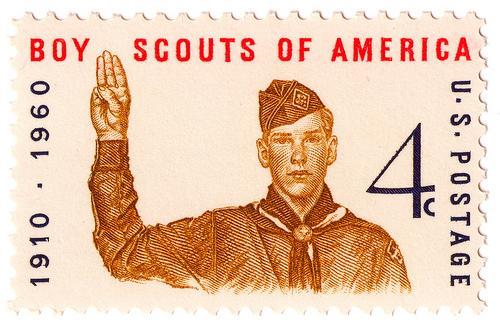
Co-authored with Alesha Doan
The Boy Scouts of America (BSA) has recently received a lot of press and accolades for making the decision to allow girls to join the organization - moving towards an integrated scouting experience. On the surface, the BSA should be commended for moving its organization toward an age-old ideal of equality of opportunity. Yet reading the fine print of the BSA’s announcement reveals a less ambitious push for gender equity, that continues to reinforce sex segregated notions of leadership.
The BSA has created a two-tiered system that will allow existing cub scout packs to create “a new girl pack, establish a pack that consists of girl dens and boy dens or remain an all-boy pack.” Starting in 2019, BSA will roll out a new “Girl’s Program” for girls that runs parallel to Boy Scouts using the same curriculum. BSA goes on to specify that “This unique approach allows the organization to maintain the integrity of the single gender model while also meeting the needs of today’s families.” So rather than integrate Boy Scouts, the BSA has offered the opportunity for younger cub scouts to have an integrated or segregated experience. Once children reach the age of 11, they will be separated into boy scouts and a girl program. So while families may have an integrated scouting experience early in their children’s lives, this shift in policy still creates two separate scouting programs as children become adolescents, simply offering young girls the opportunity to “use the same curriculum” that is available to boys. More revealing, the BSA claims this new organizational structure will maintain the current--and undefined--“integrity” of the system.
Herein lies a significant problem: gender roles become more rigidly defined in society as children get older yet BSA has created a policy change that underscores these socially constructed roles by segregating older children. Even though BSA references research that shows the lessons contained in the boy’s curriculum is applicable to girls, it backhandedly reinforces gender differences by instituting separate spaces. The message to young girls and society writ large is that boys should have their exclusive, protected, and culturally revered space all to themselves especially as they get older.
This separate but equal organizational structure harkens back to similar institutional arrangements that have provided a lasting legacy of inequality in the USA. And, BSA is not the only major institution to announce a move away from sex segregation. Recently, the U.S. military announced that they would rescind the Ground Combat Exclusion Policy that kept women from serving in combat roles. Many of the same arguments of organizational inclusion as a foundation to equality of opportunity led to this shift. But, a shift in policy alone is not enough to affect change.
As we argue in our research on gender integration into the Army’s Special Forces, how organizations integrate is often more meaningful than the lip service of inclusion. Resistance to integration is often entrenched in organizations on multiple levels including the individual, cultural, and organizational level. In order for meaningful and lasting change to occur, entrenched resistance to change has to be addressed at all three levels. Meaning that policies must change, but so to must the norms of leadership, culture, mentoring, and individual training and opportunities. Establishing organizational policies and practices that claim to prop up women as separate but equal simply ensures they will never be seen--or treated-- as equal by their male colleagues.
As our research demonstrates, the military’s desire to integrate women into combat positions, particularly Special Forces, has been met by resistance among many of its rank and file members. Attempting to find a “compromise” position, many Special Forces members suggested having “separate but equal” teams that would preserve the “unique and elite” male-only teams that currently operate in the Army. In essence, soldiers’ idea of creating gender segregation in Special Forces was simply a way to preserve what they saw as the “integrity” the all-male teams. “Integrity” is often used as a code word for male-only, reifying the privilege men have in this exclusive space.
To be clear, we are not arguing that even the true integration of BSA would mean there is no longer a need for Girls Scouts. As the Girl Scouts discussed in their statement, there is still an urgent need for a girl-centered leadership opportunities. The reality is that girls exist in a world where they are systematically disadvantaged when it comes to leadership opportunities, and having space for those with less privilege to engage with each other and build skills to thrive in a world that is still striving for equality of opportunity is important. However, boys are not faced with these same obstacles. Acknowledging that we must change systems and reform our historic institutions to make real meaningful strides toward equity means we must do exactly that - change the structures of the organization and move towards equality.
If BSA wants to be a real leader on these issues they should open their organization to girls in a truly meaningful and integrated way.
